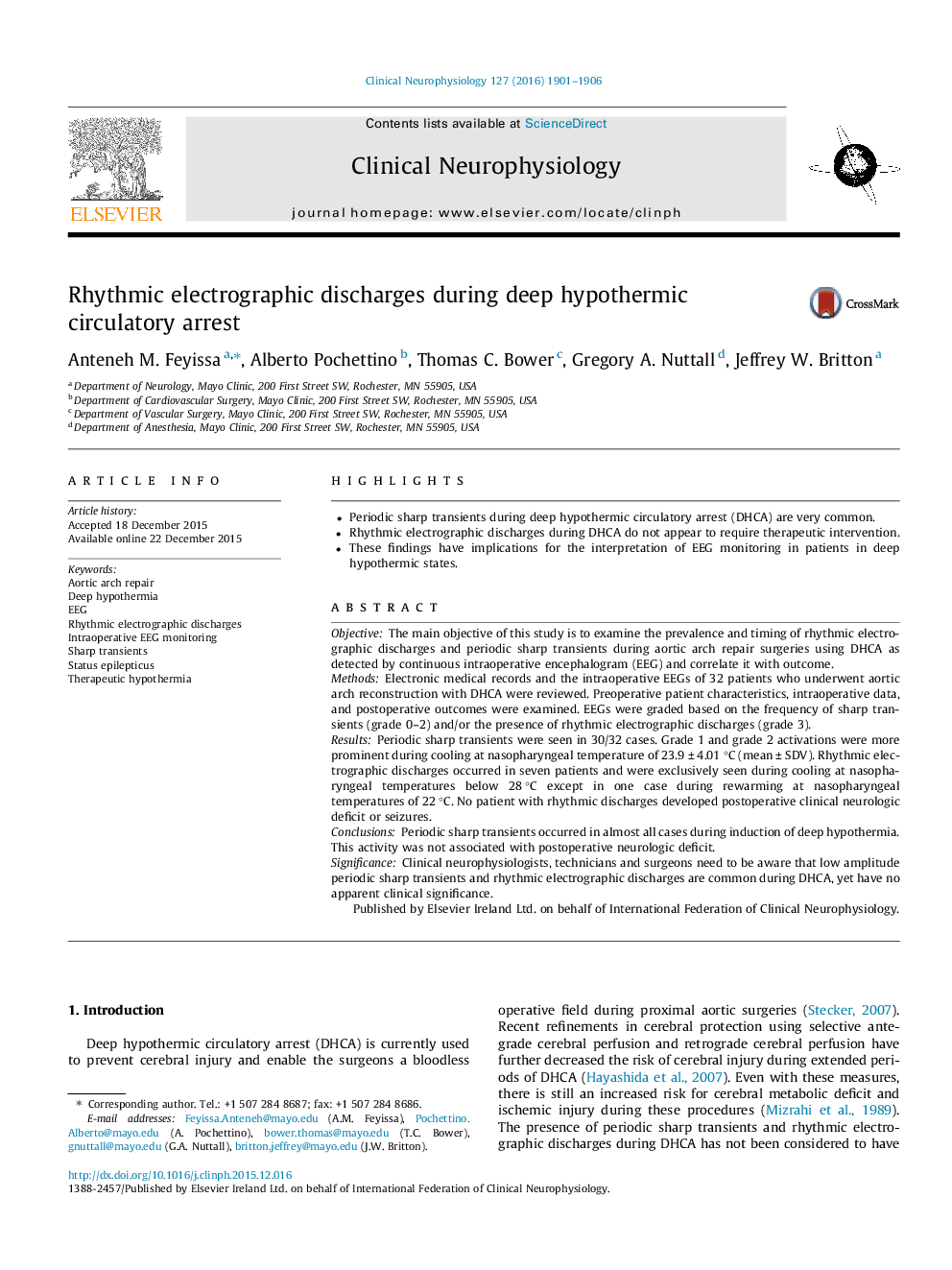| Article ID | Journal | Published Year | Pages | File Type |
|---|---|---|---|---|
| 3042905 | Clinical Neurophysiology | 2016 | 6 Pages |
•Periodic sharp transients during deep hypothermic circulatory arrest (DHCA) are very common.•Rhythmic electrographic discharges during DHCA do not appear to require therapeutic intervention.•These findings have implications for the interpretation of EEG monitoring in patients in deep hypothermic states.
ObjectiveThe main objective of this study is to examine the prevalence and timing of rhythmic electrographic discharges and periodic sharp transients during aortic arch repair surgeries using DHCA as detected by continuous intraoperative encephalogram (EEG) and correlate it with outcome.MethodsElectronic medical records and the intraoperative EEGs of 32 patients who underwent aortic arch reconstruction with DHCA were reviewed. Preoperative patient characteristics, intraoperative data, and postoperative outcomes were examined. EEGs were graded based on the frequency of sharp transients (grade 0–2) and/or the presence of rhythmic electrographic discharges (grade 3).ResultsPeriodic sharp transients were seen in 30/32 cases. Grade 1 and grade 2 activations were more prominent during cooling at nasopharyngeal temperature of 23.9 ± 4.01 °C (mean ± SDV). Rhythmic electrographic discharges occurred in seven patients and were exclusively seen during cooling at nasopharyngeal temperatures below 28 °C except in one case during rewarming at nasopharyngeal temperatures of 22 °C. No patient with rhythmic discharges developed postoperative clinical neurologic deficit or seizures.ConclusionsPeriodic sharp transients occurred in almost all cases during induction of deep hypothermia. This activity was not associated with postoperative neurologic deficit.SignificanceClinical neurophysiologists, technicians and surgeons need to be aware that low amplitude periodic sharp transients and rhythmic electrographic discharges are common during DHCA, yet have no apparent clinical significance.
